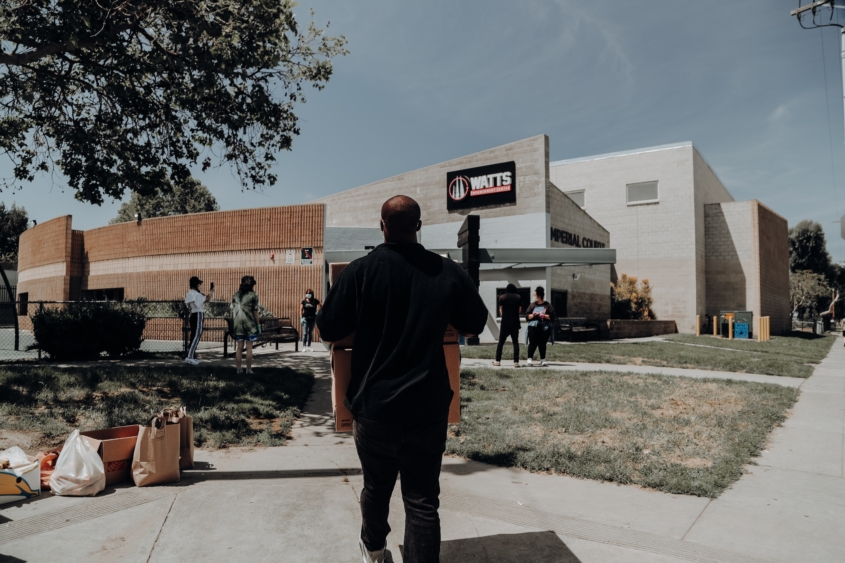
In Nation’s 2 Largest Metros, Blacks and Latinos Are More Likely to Die From COVID-19 LPPI report highlights need to protect essential workers and expand economic assistance in high-poverty areas
A study by the UCLA Latino Policy and Politics Initiative based at UCLA Luskin finds that Latino and Black residents of Los Angeles County and New York City are roughly twice as likely as white residents to die from COVID-19. The research also revealed that high-poverty neighborhoods in both regions have the highest rates of COVID-19 cases and COVID-19–related deaths.
Sonja Diaz, founding director of the policy initiative, said two significant reasons for those trends are that low-income Black and Latino people in both regions tend to have a greater need to work outside of the home and a greater reliance on public transportation, both of which put them at a greater risk for exposure to the coronavirus.
“We are now seven months into the pandemic, and we are starting to have clear information about the disproportionate health and economic impacts that communities of color are facing,” Diaz said. “It’s time to address the specific ways that COVID-19 hurts Latino and Black families and to protect our most vulnerable communities as the virus surges across the nation.”
In Los Angeles County, the age-adjusted death rate was 54 per 100,000 for Latino residents and 46 per 100,000 for Black residents, compared to 23 per 100,000 for white residents; in New York City, the age-adjusted death rates were 247 per 100,000 for Latino residents, 237 per 100,000 for Black residents and 120 per 100,000 for white residents.
The authors recommend that six measures be implemented immediately in cities with large populations of vulnerable communities:
- Increase testing for low-income communities of color.
- Provide access to health services and healthy food in low-income communities.
- Add protections on public transportation, including providing hand sanitizing stations and free masks.
- Expand access to health care and paid sick leave for essential workers.
- Increase access to telehealth for low-income residents and the uninsured to bridge the lack of medical care.
- Ensure that accurate race and ethnicity information is being collected so that elected officials and public health experts can understand the impact of COVID-19 in communities of color.
The researchers analyzed data from Los Angeles County and New York City, two areas that have been hard-hit during the pandemic and are home to large Latino and Black populations. They found that residents who didn’t have health insurance, lived in overcrowded housing conditions and had limited access to the internet will encounter inequitable access to health care during the pandemic.
In addition, the authors found that people between the ages of 18 and 40 have the highest rate of infection in Los Angeles County; in New York, people over age 45 are most affected. Men in both regions have higher rates of infection than women.
“Essential workers are putting their lives at risk every day to keep the economy running and our families fed, and it’s making them sick,” said Laura Martínez, the lead author of the report and a UCLA postdoctoral fellow in obstetrics and gynecology. “The data clearly shows that the brunt of the pandemic is being felt by our most vulnerable communities, and our government leaders must take into account the specific needs of Black and Latino residents.”







Leave a Reply
Want to join the discussion?Feel free to contribute!